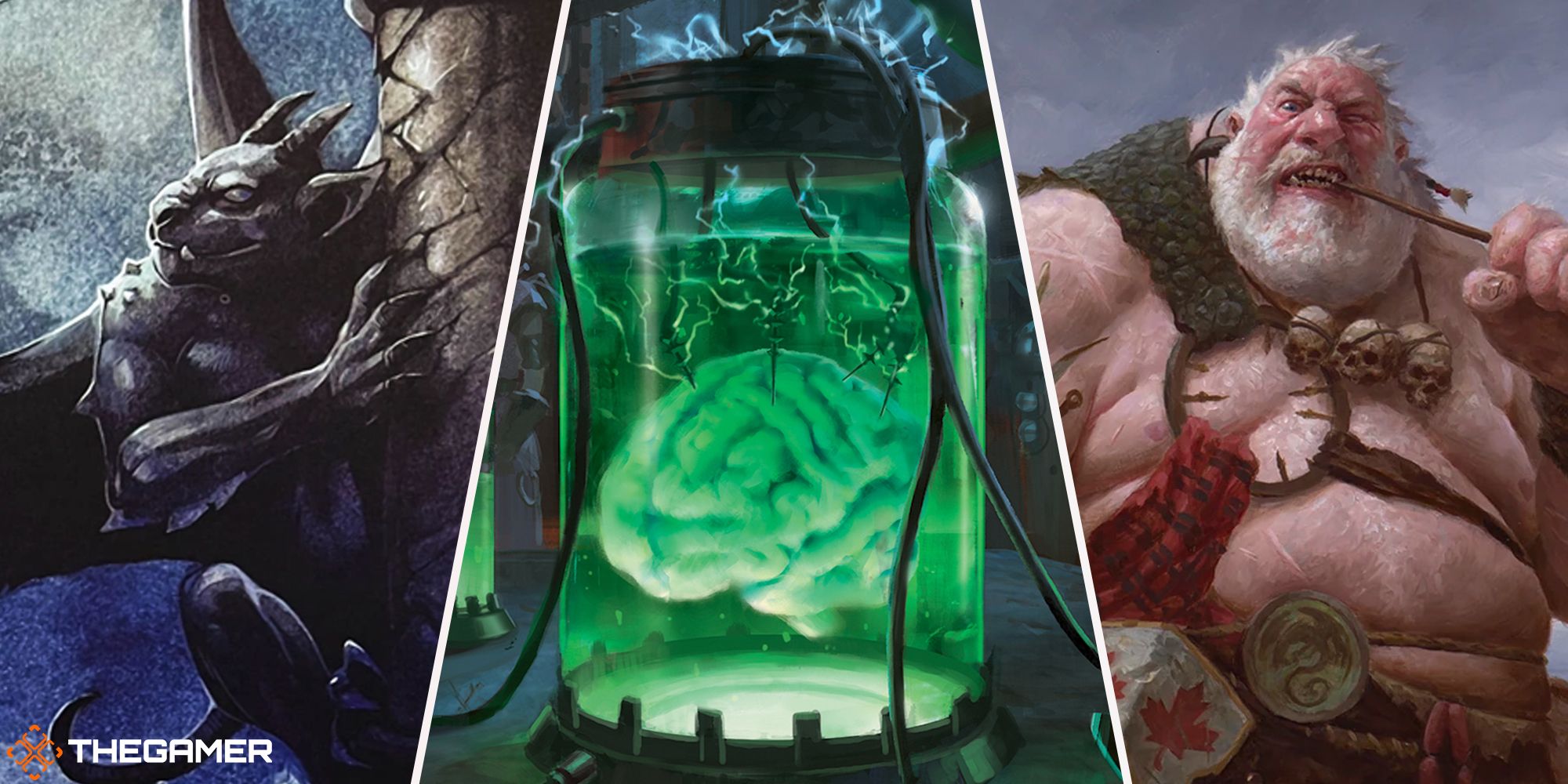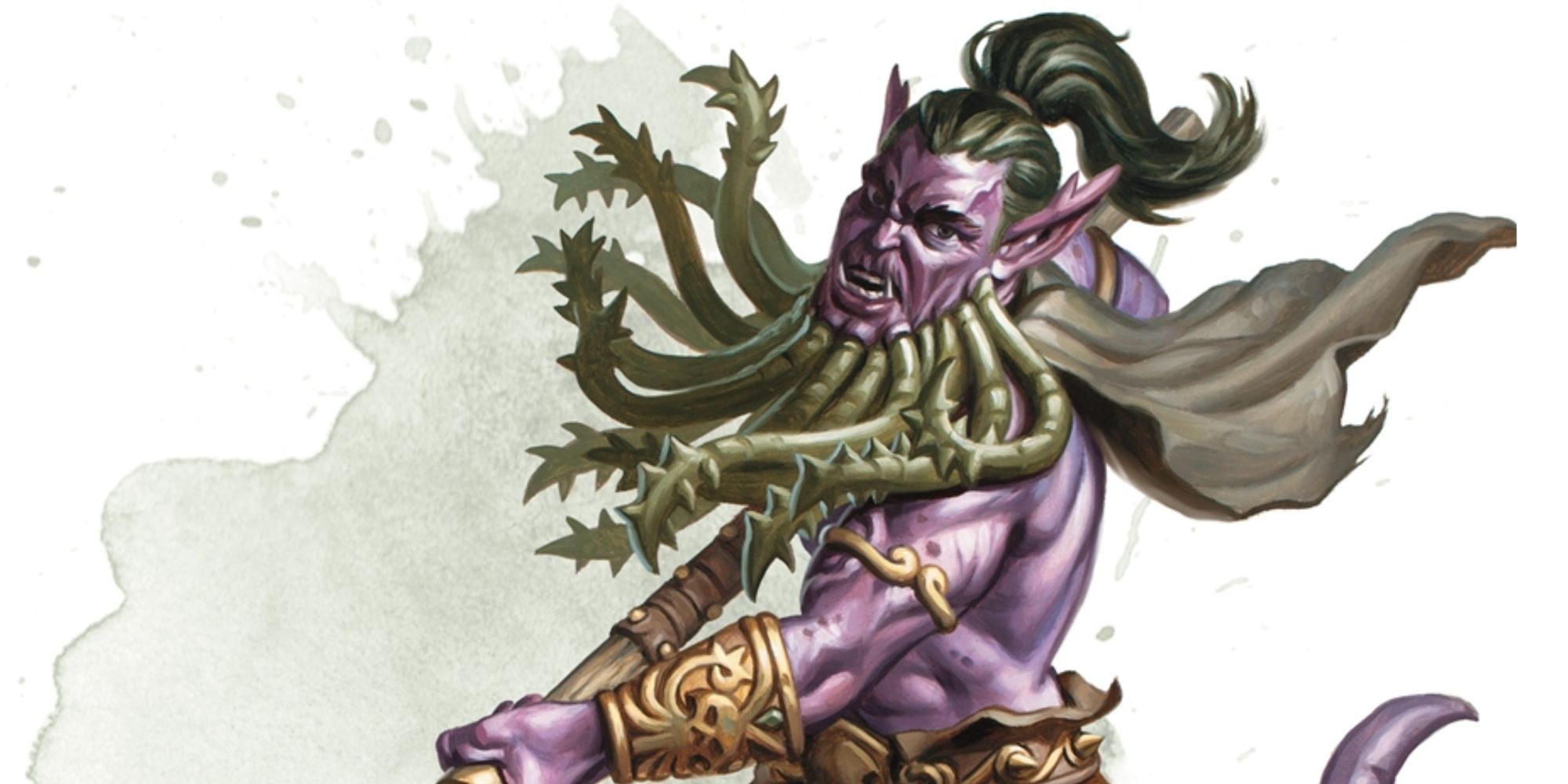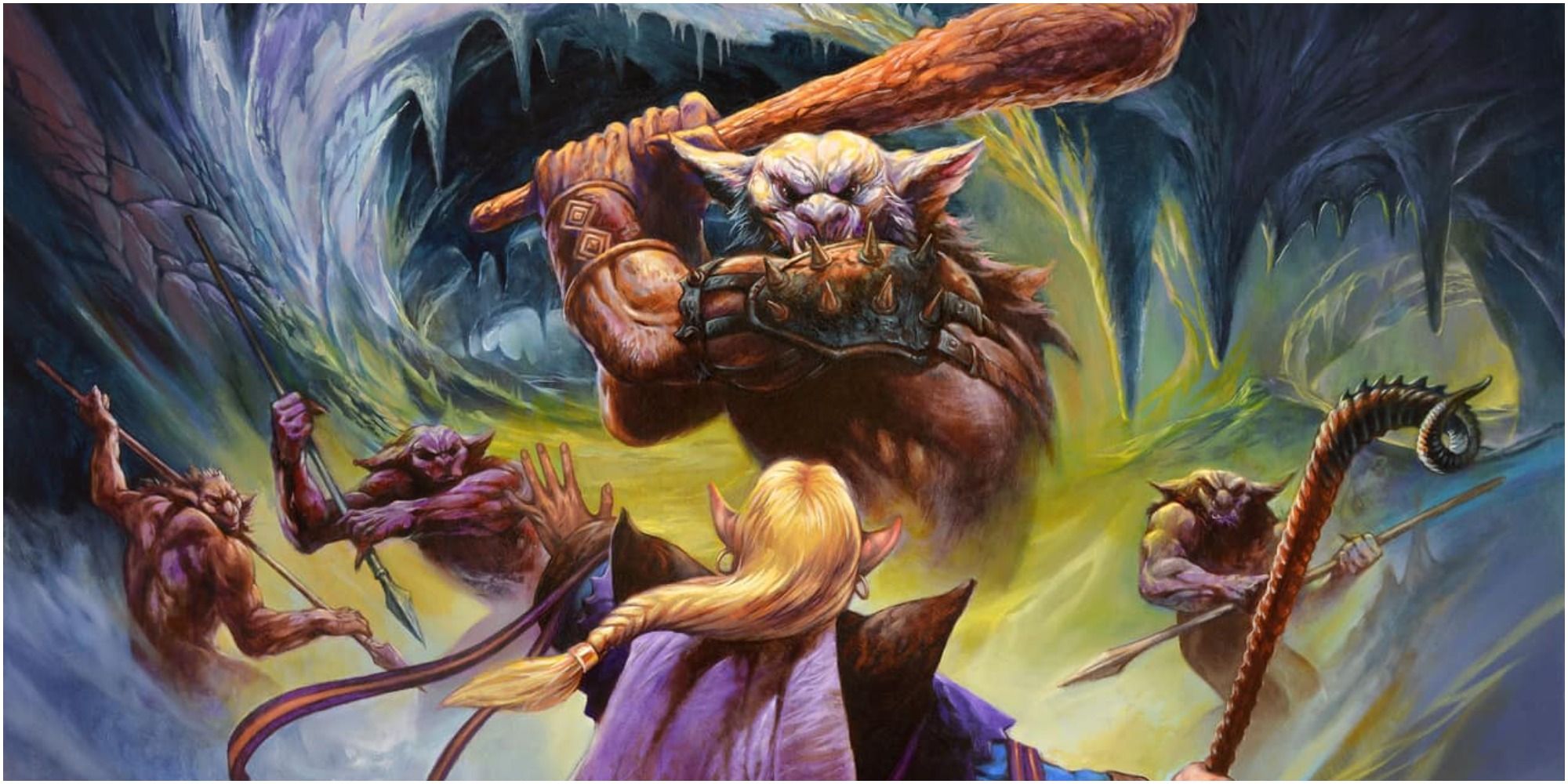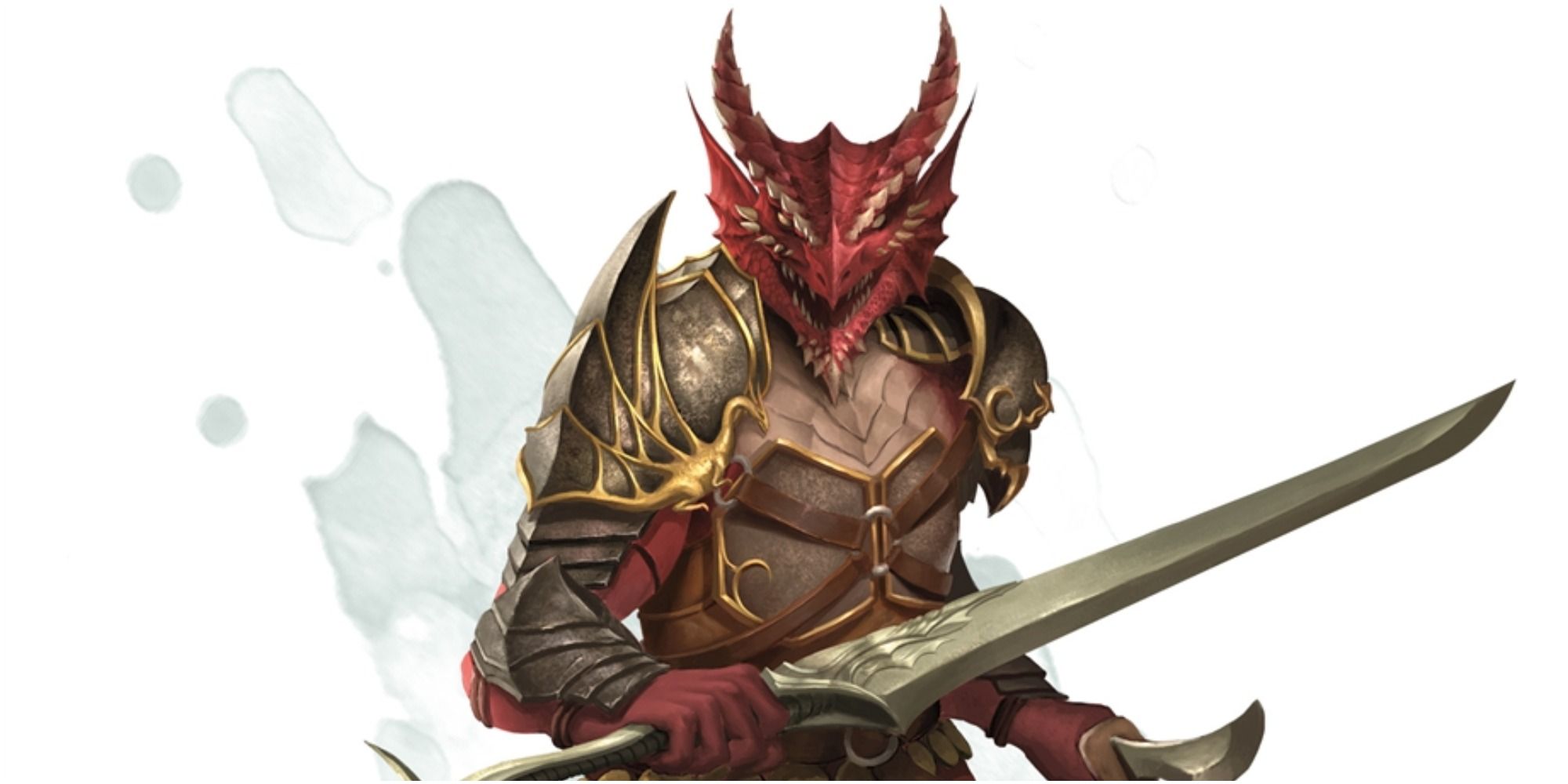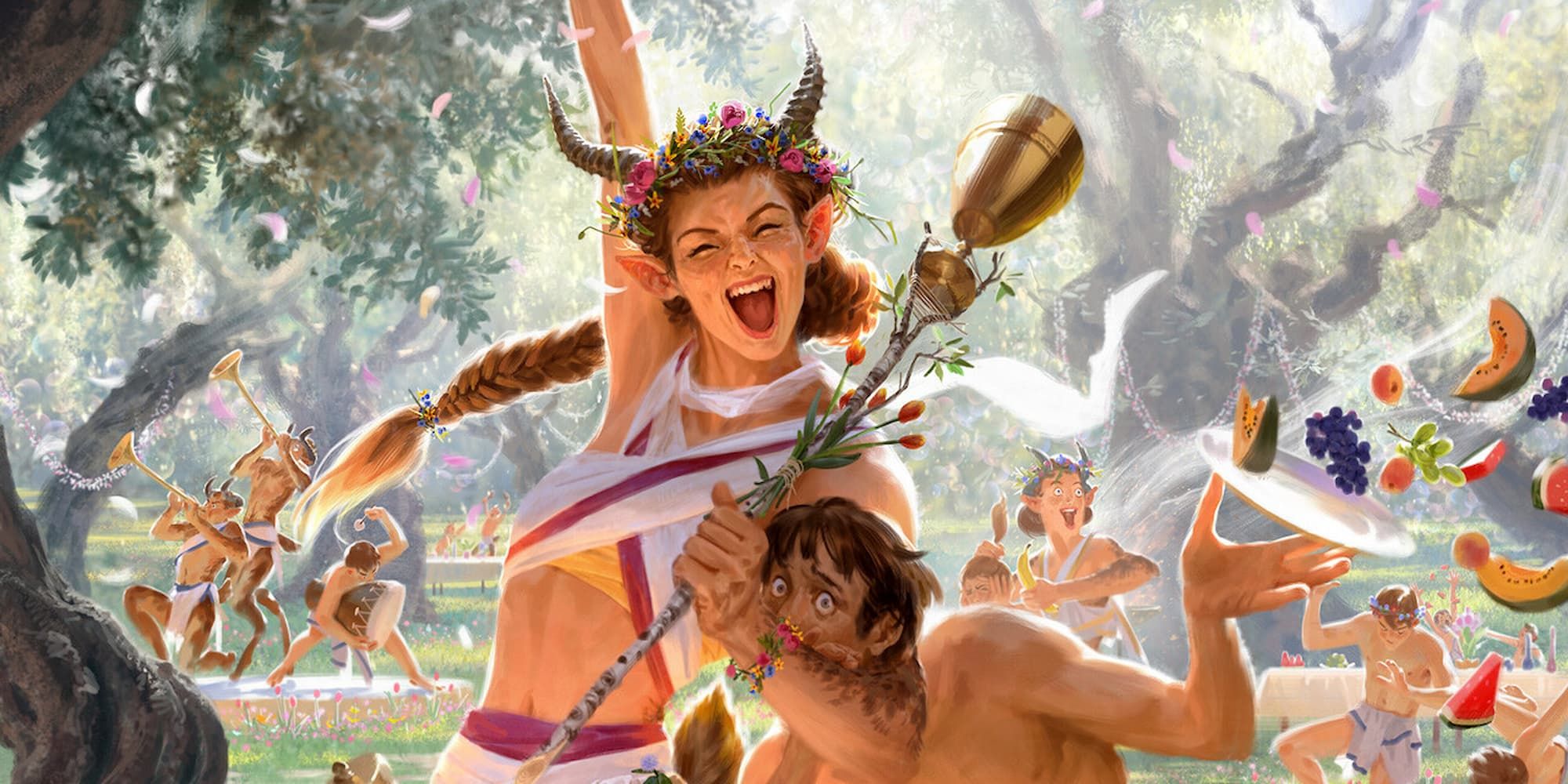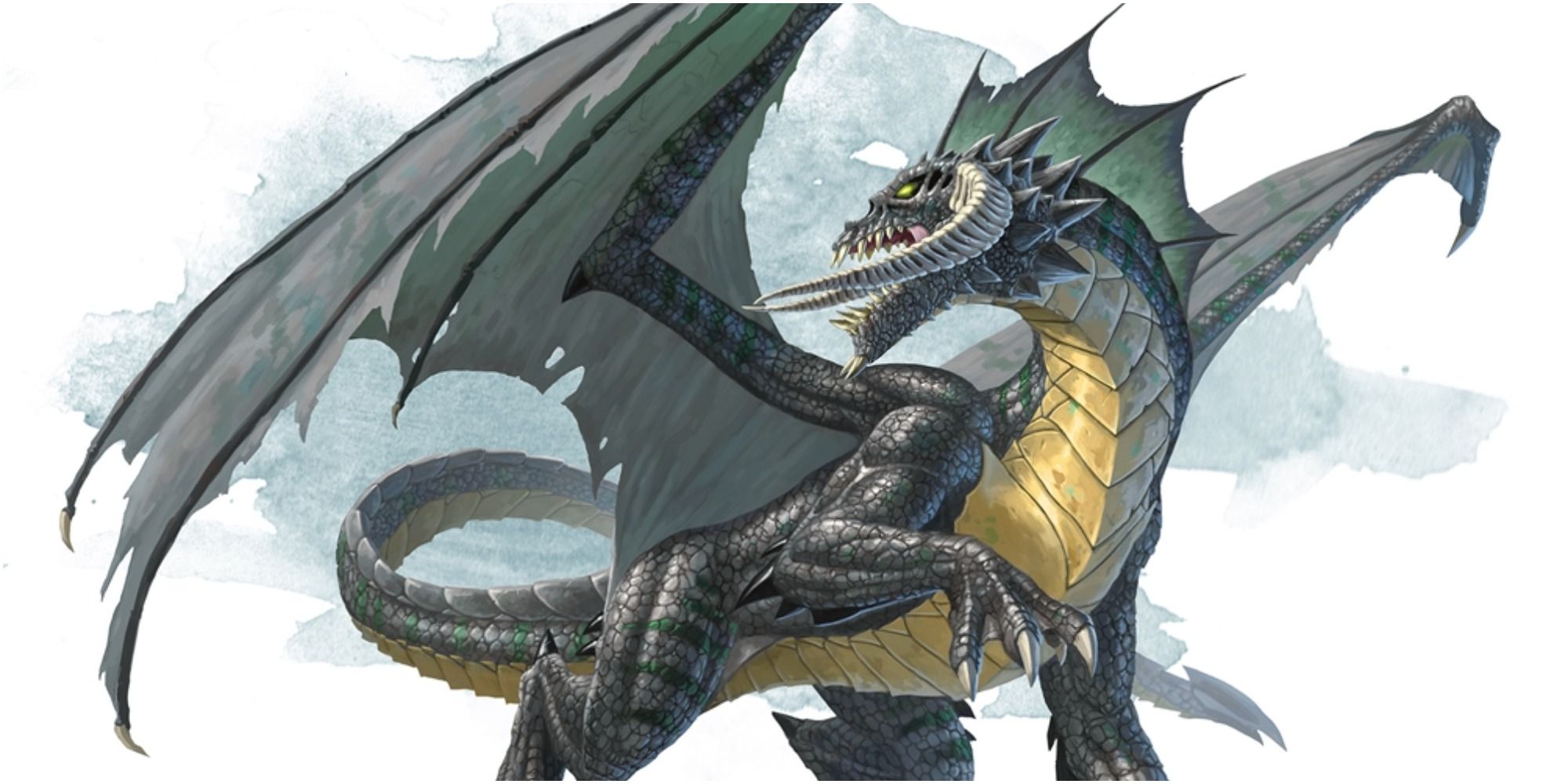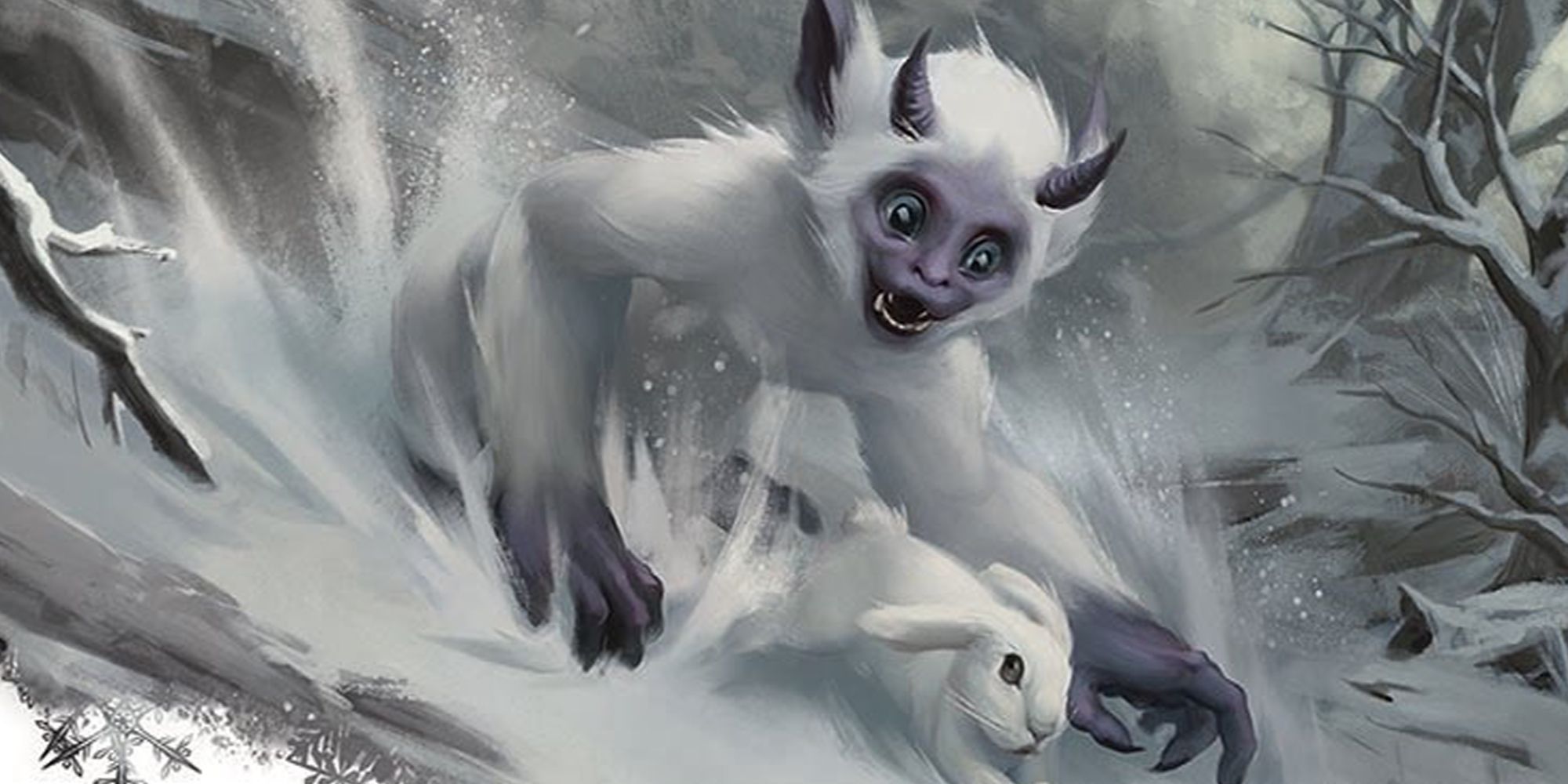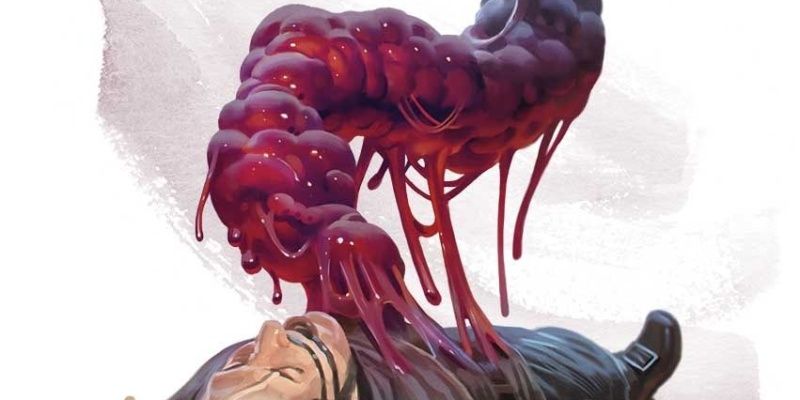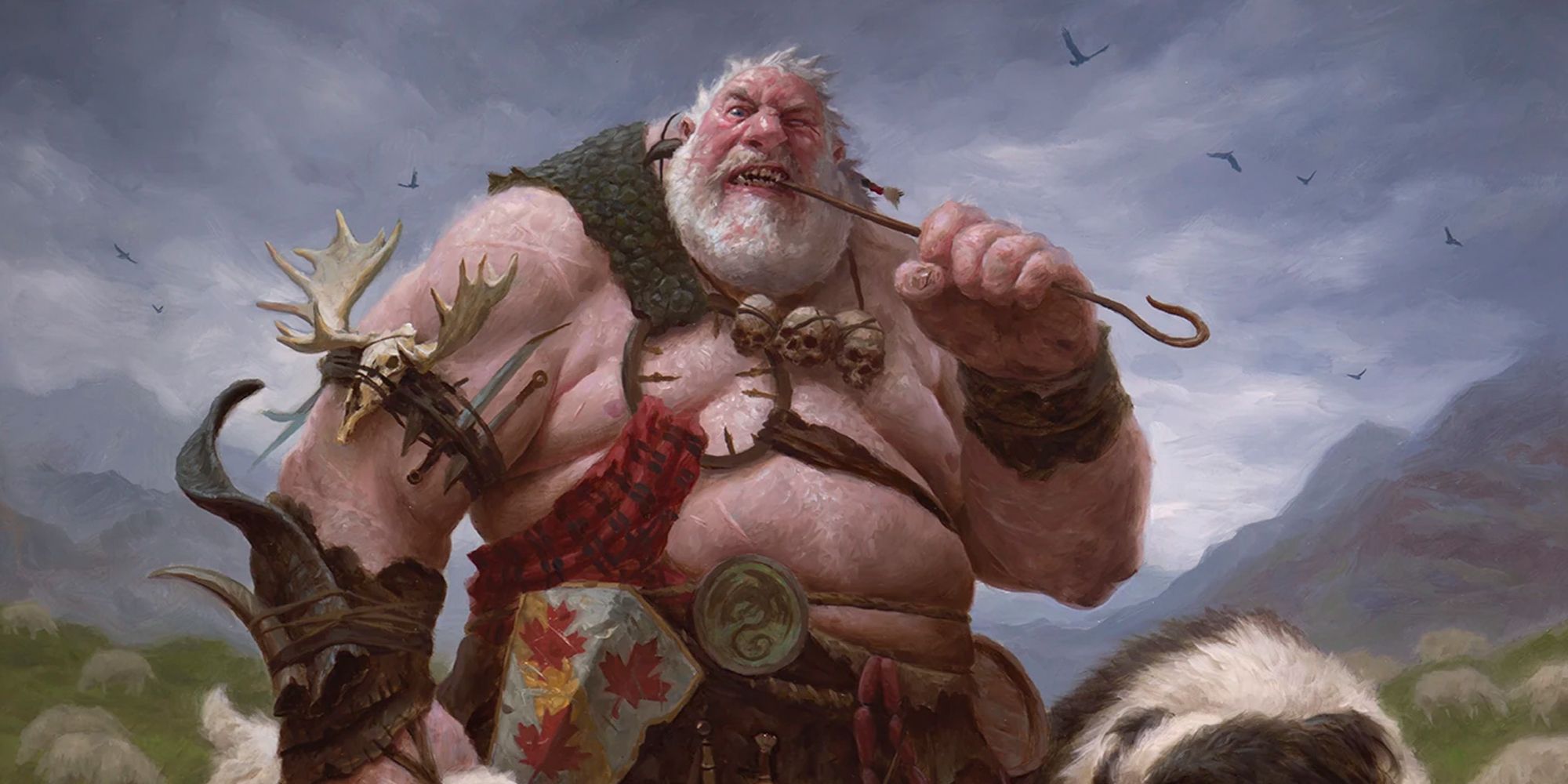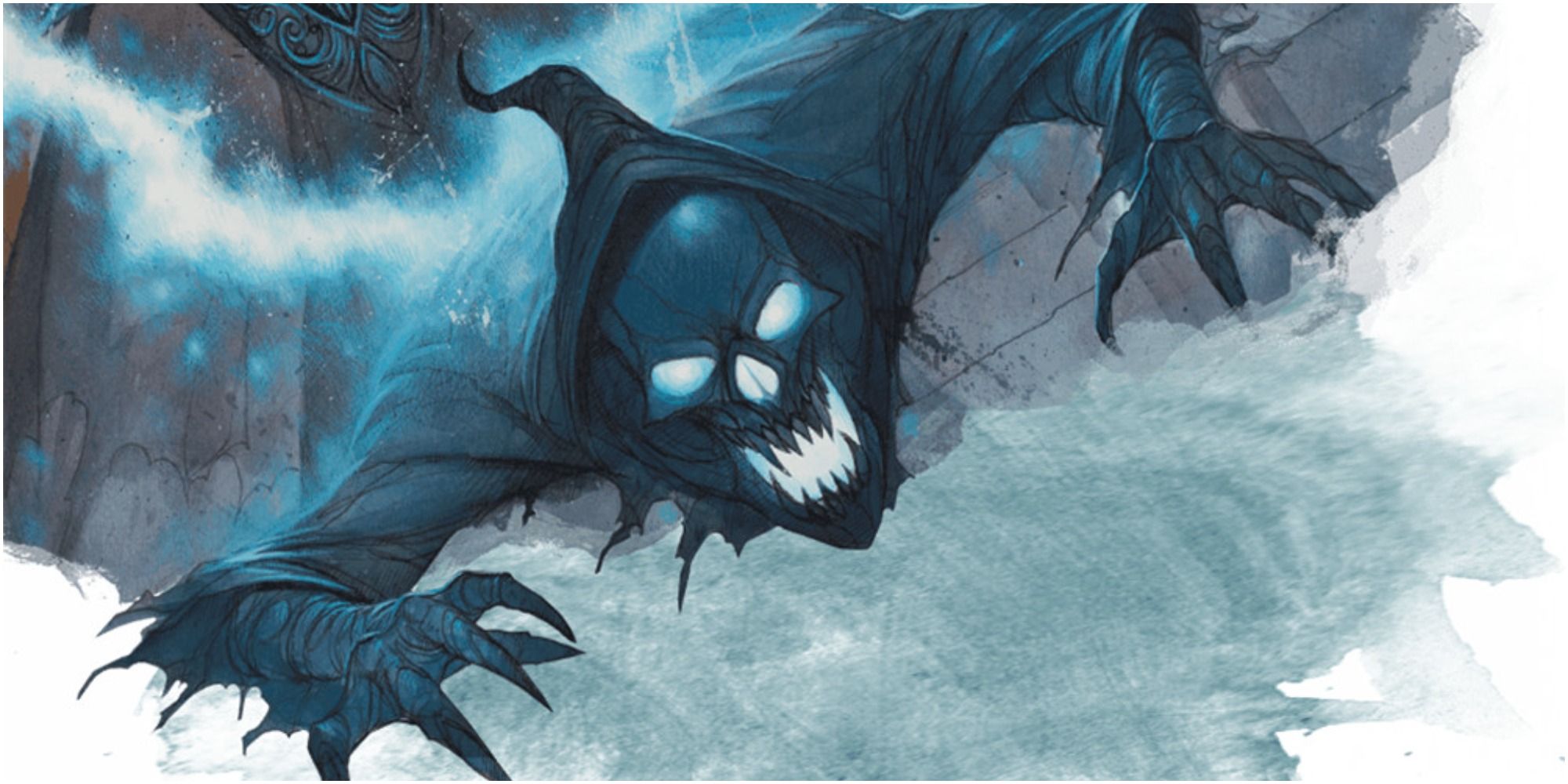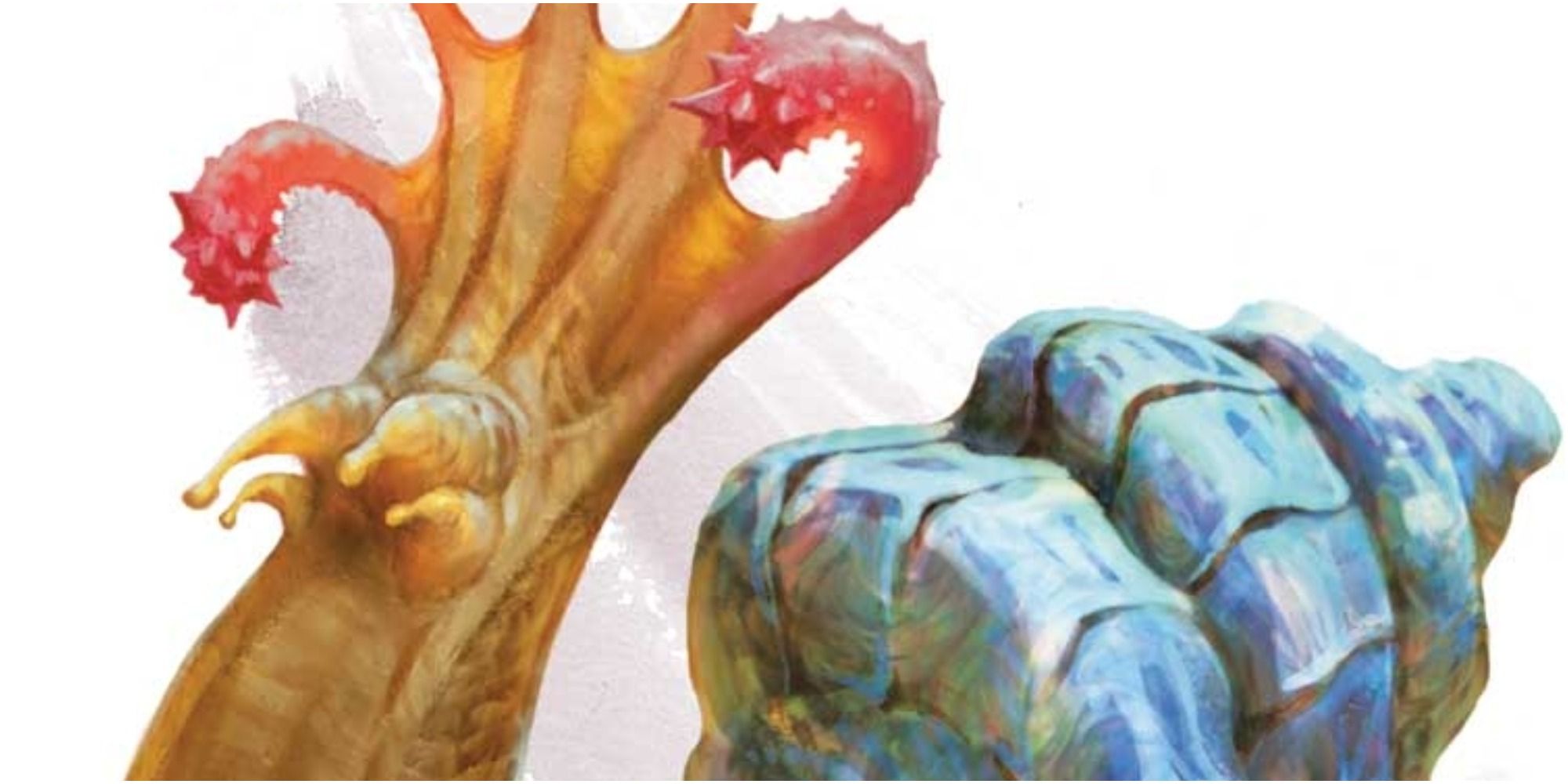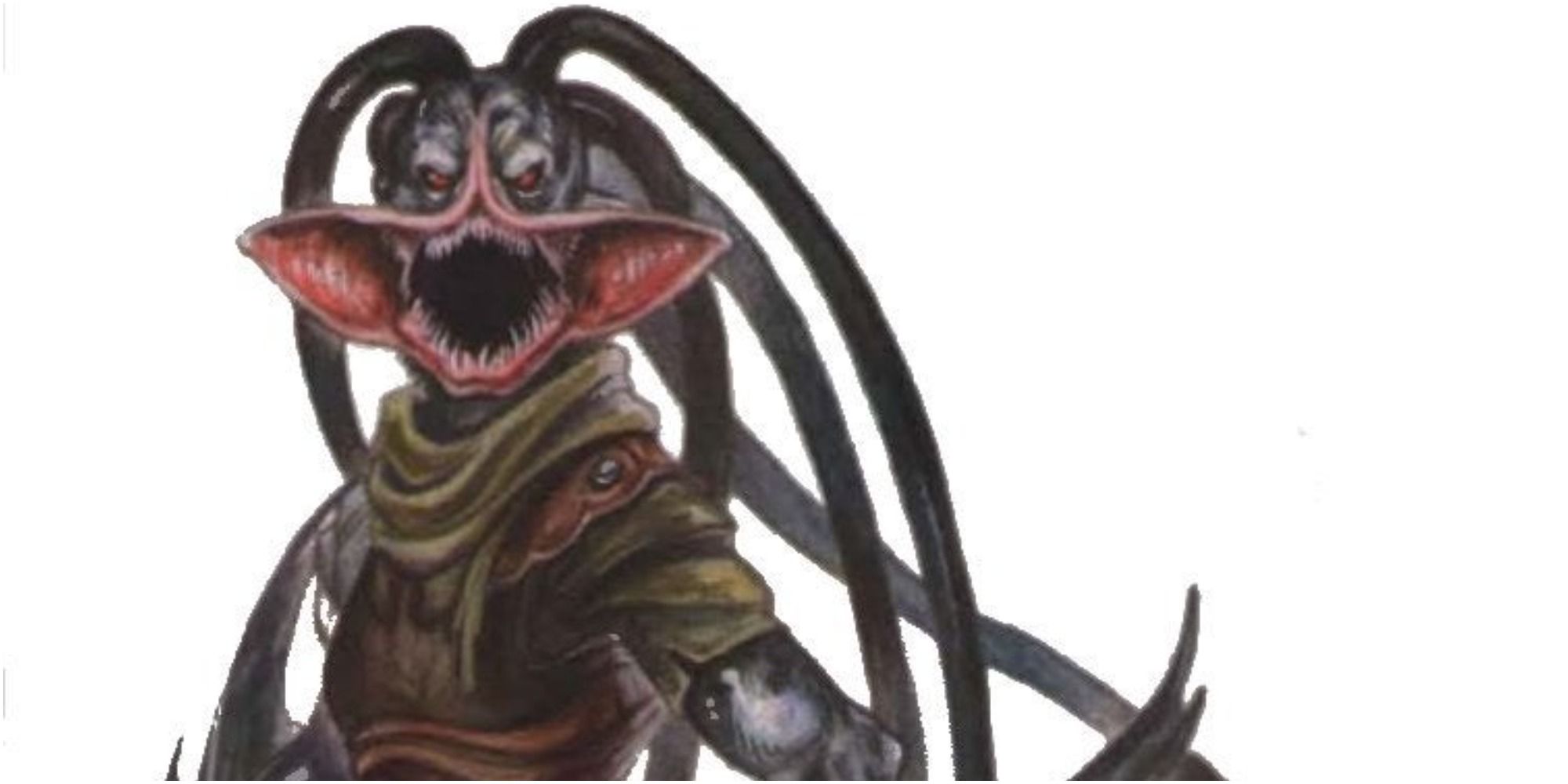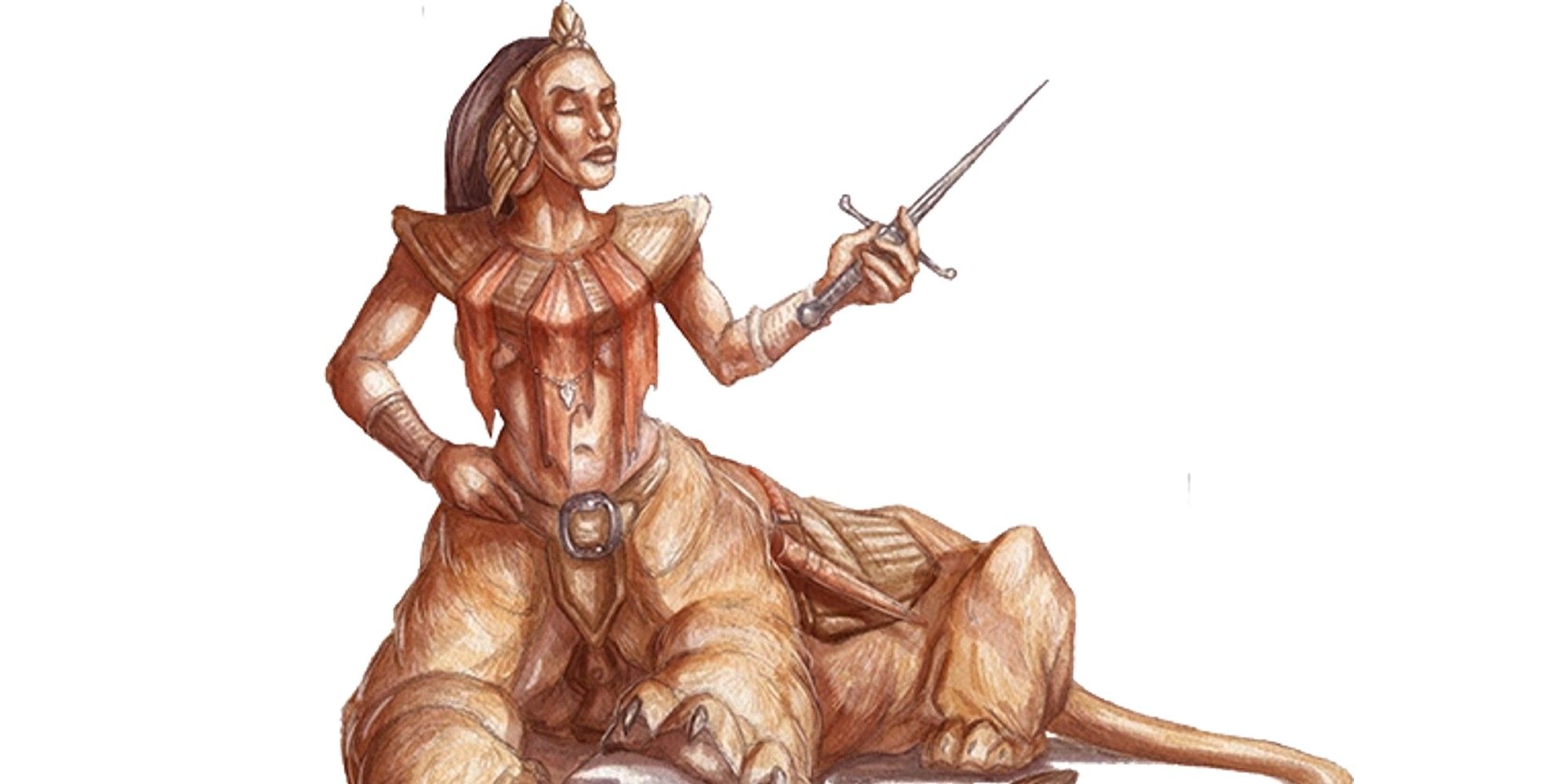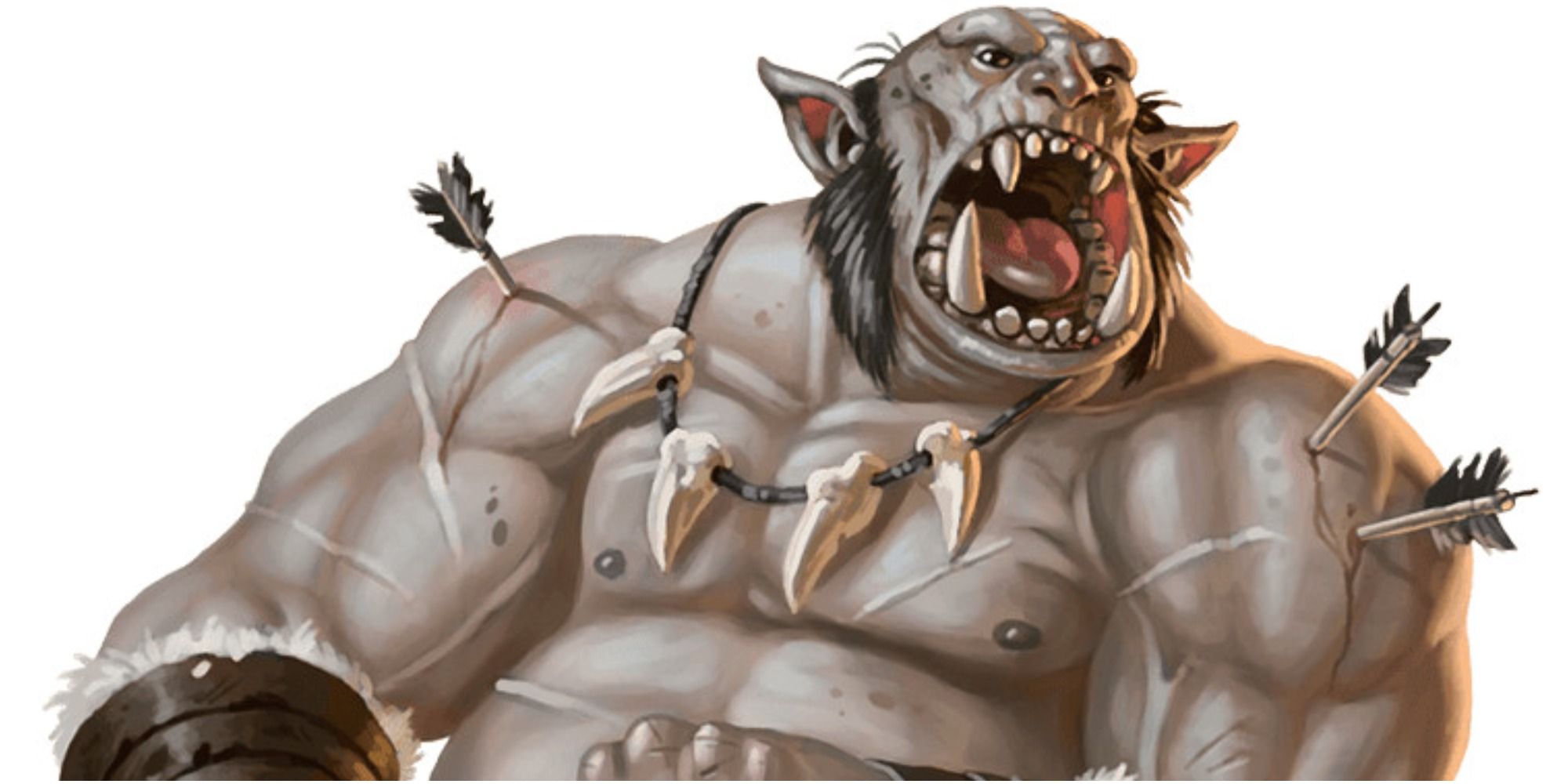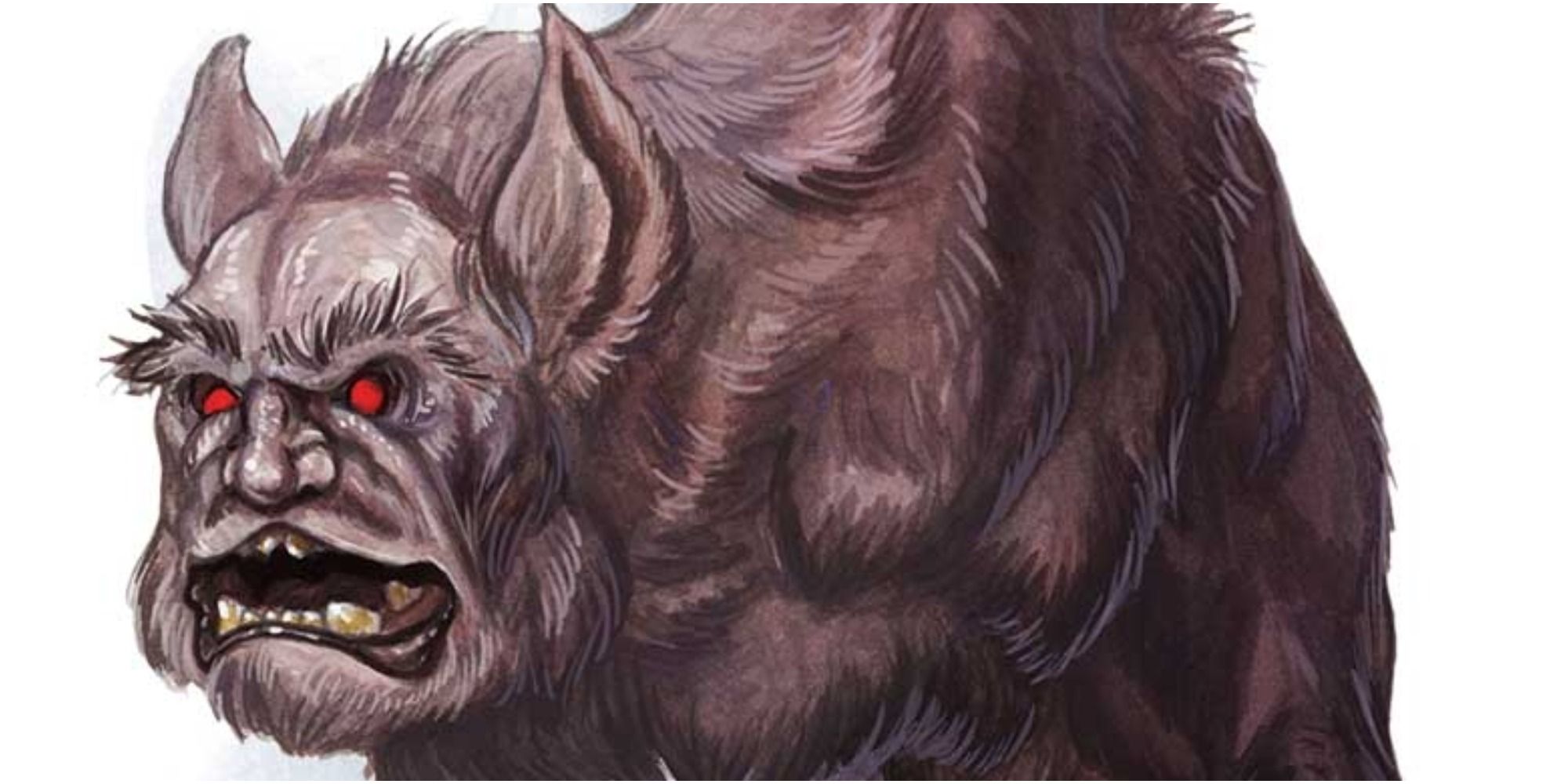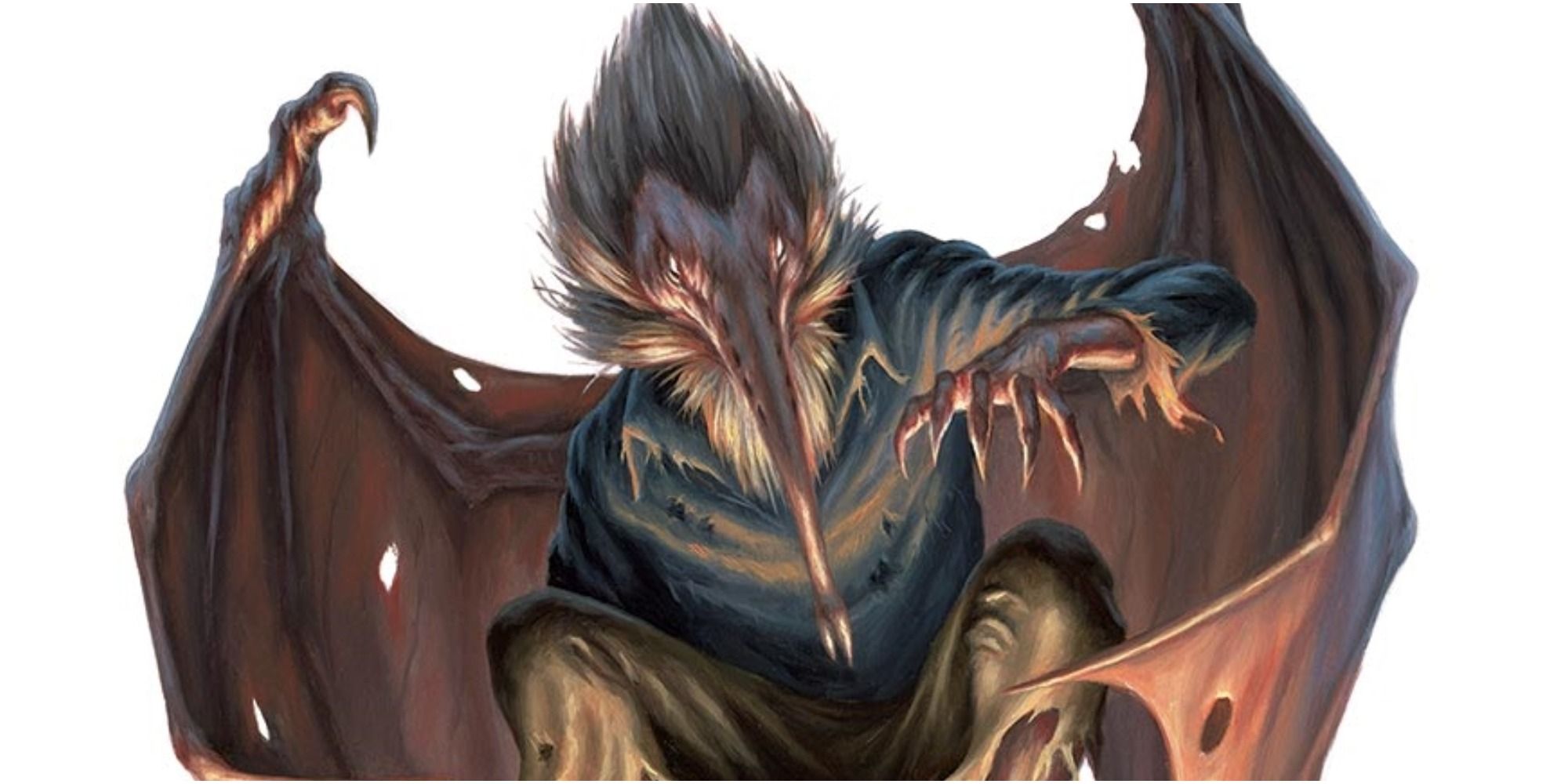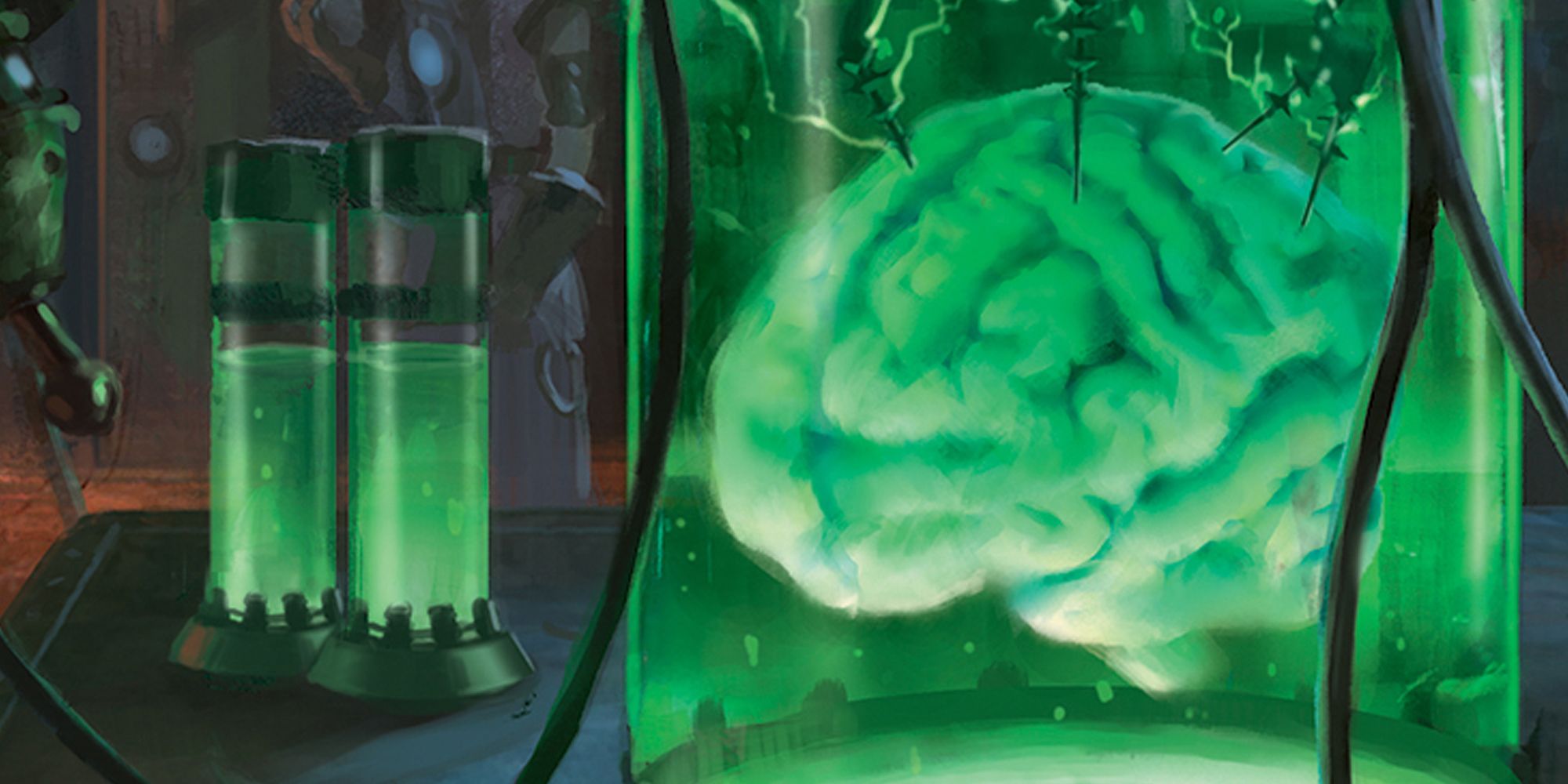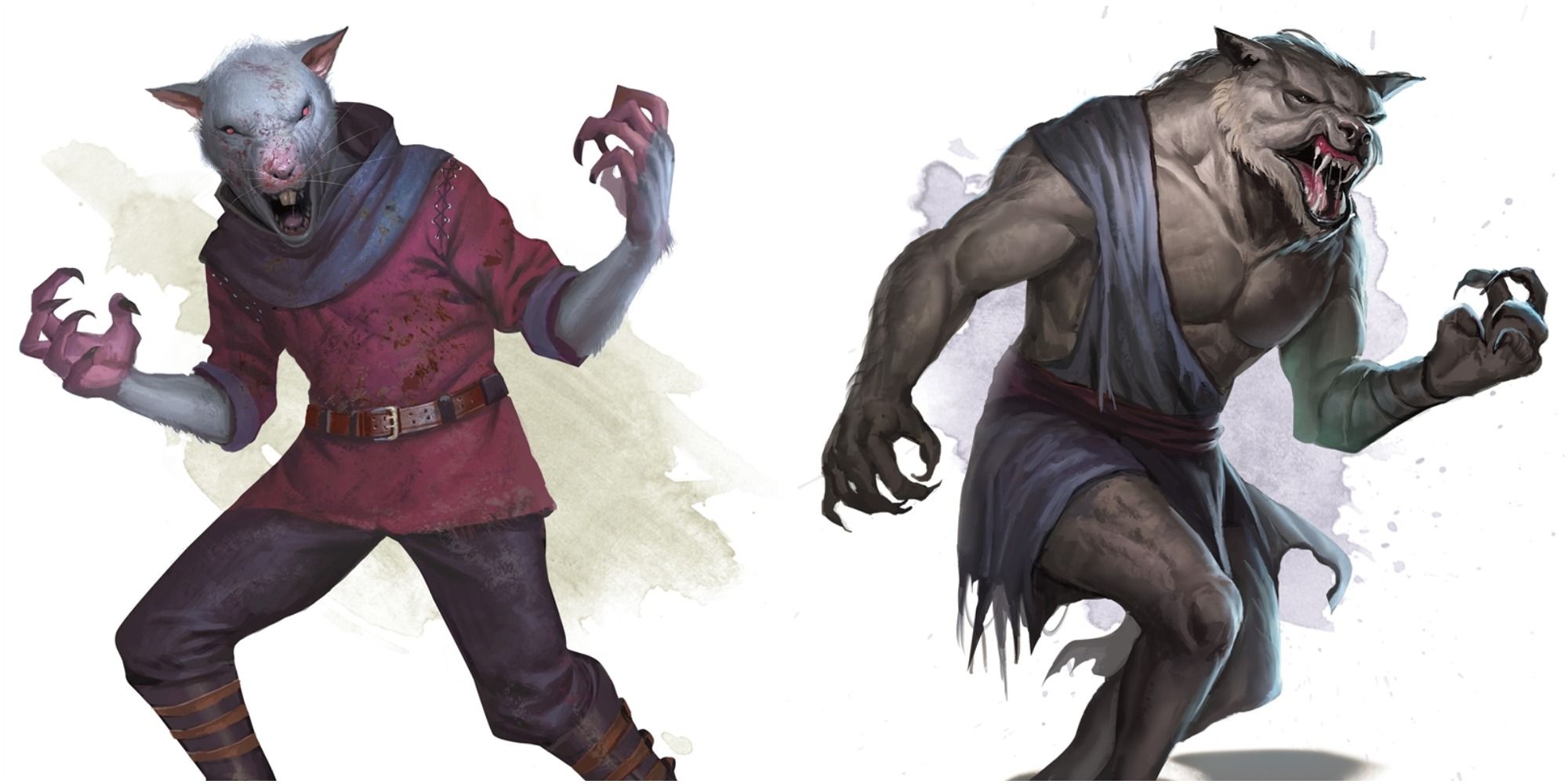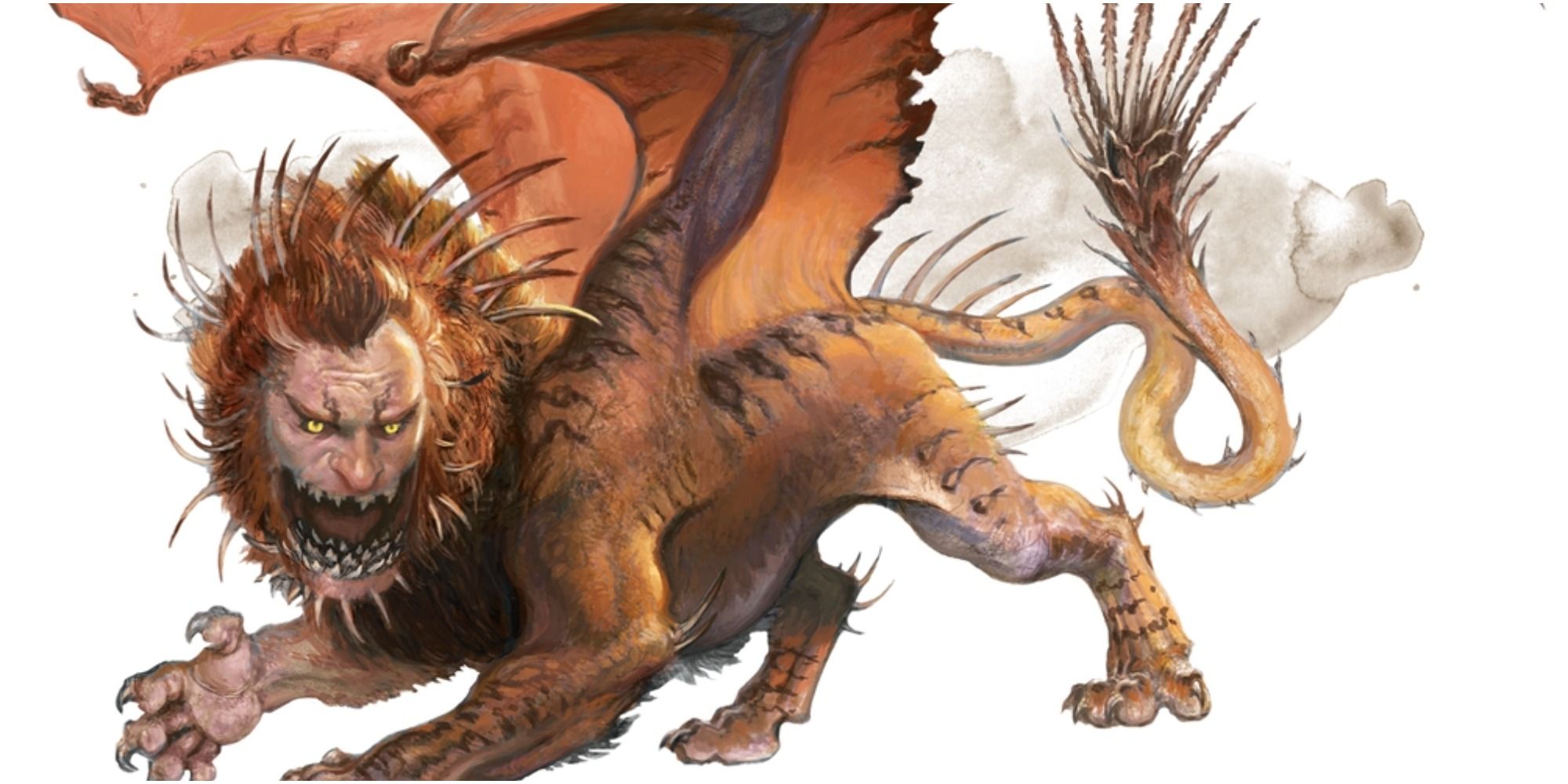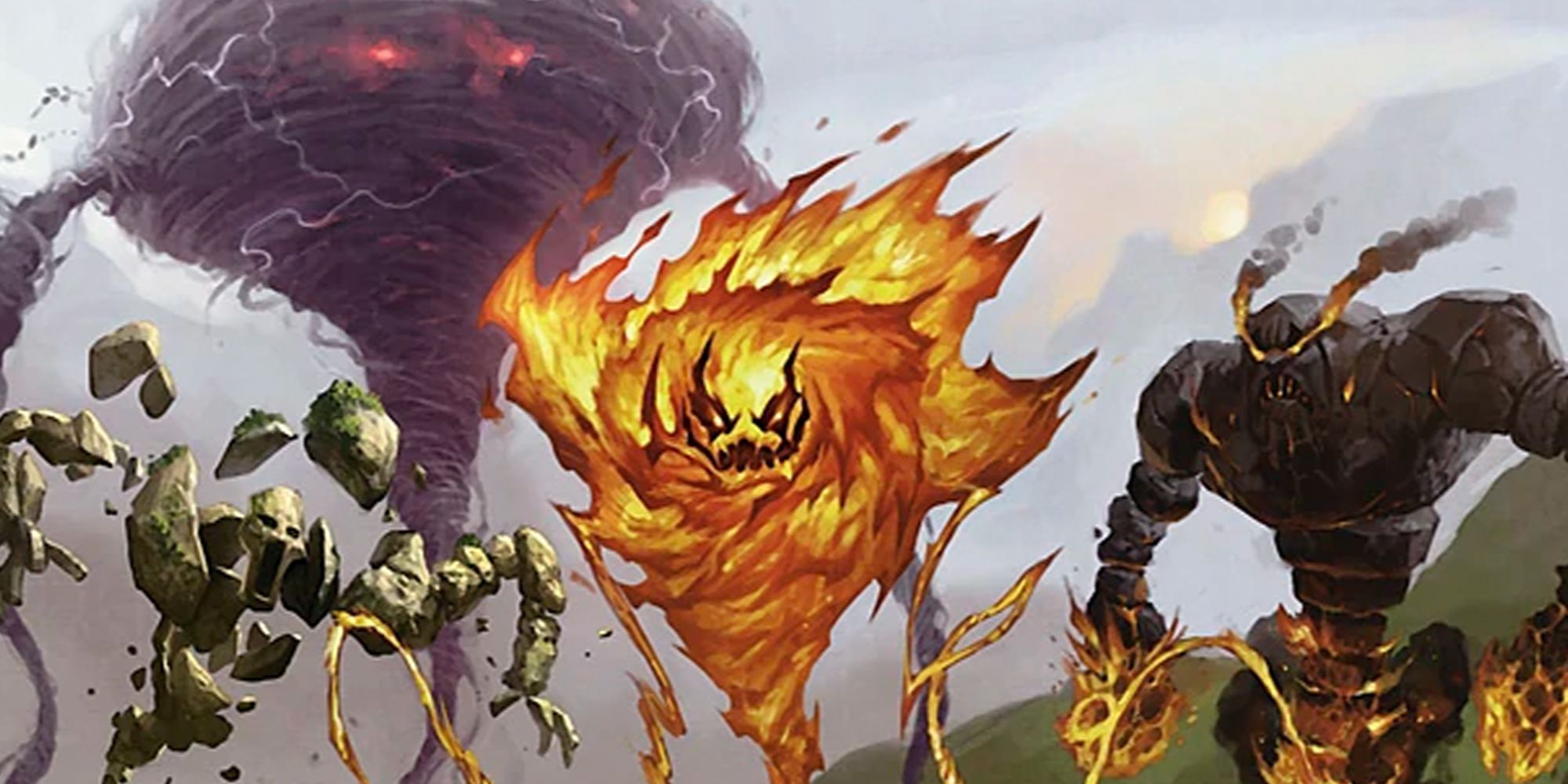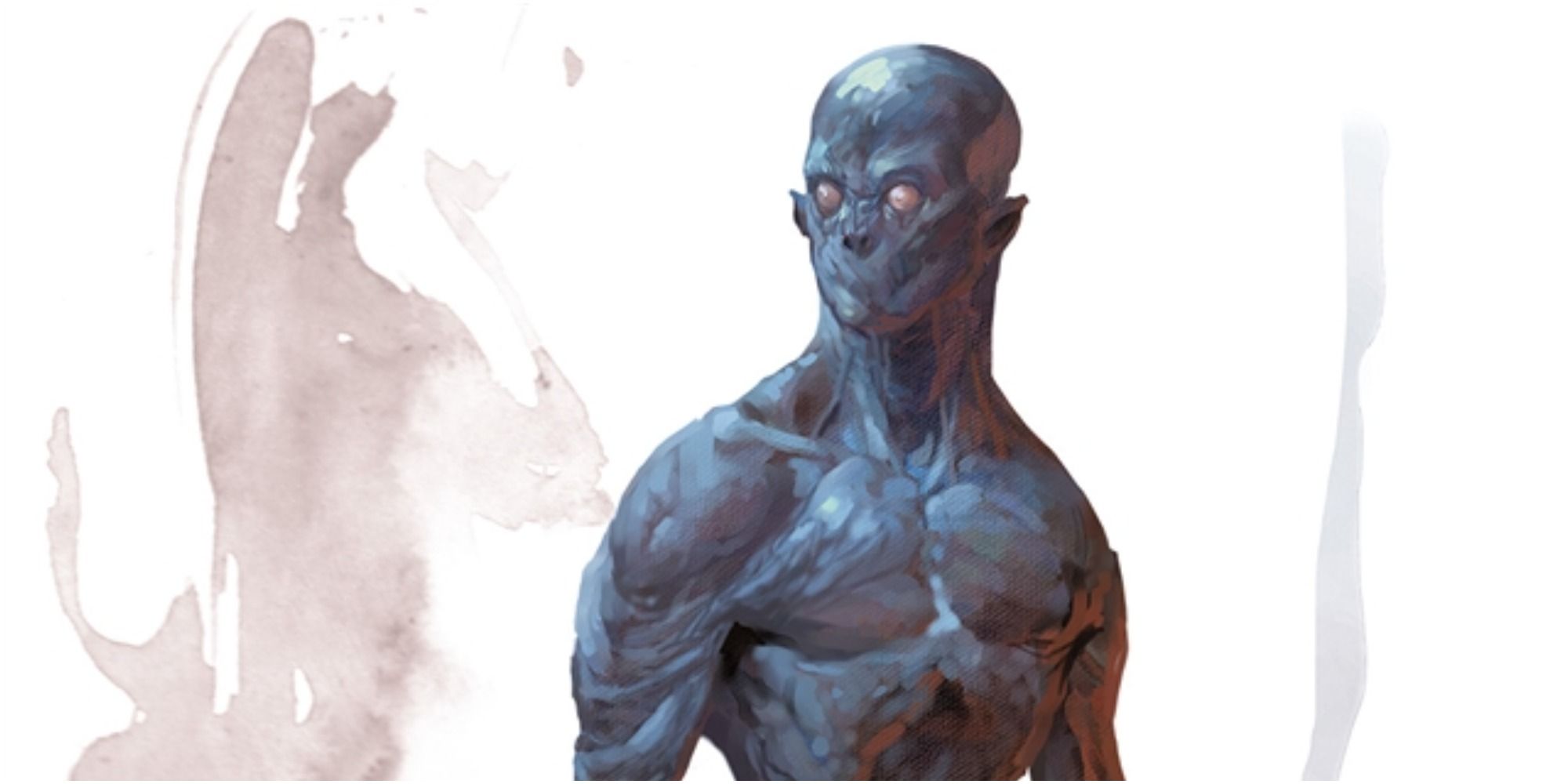When designing dungeons and adventures for a Dungeons & Dragons campaign, DMs will often include climactic boss battles that are more challenging than a standard encounter. But due to variables such as a party's levels and the number of party members in a campaign, striking a good balance of difficulty can be tricky.
Choose a boss that's too easy, and a party will steamroll it and remove tension. Choosing too difficult of a foe can result in an unintentional TPK. This is quite common with low-level parties, as this is when party members are at their most fragile. So today, we're going to examine the monsters of D&D and discuss some that make suitable bosses for lower-leveled parties.
Updated on March 25, 2023, by Gabrielle Huston: New monsters are added to D&D often, and new, creative ways to use the old ones are invented! We've updated this list with a few new suggestions.
27 Bearded Devil
While creatures within D&D may come in a wide variety of alignments, fiends are among the most universally evil monsters that adventurers may encounter in their travels. Though many devils and demons tend to bring a high challenge rating alongside them, Bearded Devils are a low-ranking lawful evil Devil that can make for a threatening foe for a level-three party.
Though their HP may initially seem rather low for a boss encounter, possessing 52 hit points, these Devils tote immunity to Fire and Poison damage. More notably, Bearded Devils are resistant to Bludgeoning, Piercing, and Slashing damage from Nonmagical sources that aren't Silvered, meaning that unless a party does their research and silvers their weapons, a Bearded Devil may as well have closer to 100 hit points.
In addition to their resiliency, these Devils can be quite fearsome for low-leveled adventurers, as their beard attack is capable of preventing a target from regaining lost hit points, while its glaive can inflict a target with wounds that deal repeated damage at the beginning of each turn. For those looking to implement fiends as a recurring threat within a long-term campaign, Bearded Devils can be a great choice for a challenging boss for parties of level-three adventurers.
26 Bugbear Chief
A straightforward Martial combatant, a Bugbear Chief is the perfect D&D boss option for those looking to utilize the likes of bandits as early-game antagonists within a campaign. Dealing additional damage with melee weapons and capable of shaking off several status effects, Bugbear Chiefs are able to take hits while dishing out considerable damage.
Though they may not be as scary as a Bearded Devil, they're the perfect boss to come along with several less-imposing allies, such as goblins that can support them in combat, allowing for combat that isn't as action-heavy on the side of the party.
25 Half-Red Dragon Veteran
Half-Red Dragon Veterans can make for intense confrontations for parties of level four or level five characters, especially if it has any form of backup. With a high AC and a moderate amount of HP, the Half-Dragon Veteran's strength is its flexibility.
With numerous attacks, this Veteran can attack up close with its longsword and short sword or from afar with its Heavy Crossbow. In a pinch, it can even use its Fire Breath to potentially deal 7d6 in a 15-foot cone. This gives the boss the same type of flexibility the party has when deciding how to fight.
24 Satyr
The Satyr may seem like a strange entry on this list, because their individual challenge rating is only 0.5. However, Satyrs aren't the challenge themselves. Many Satyrs carry panpipes on them and, when played, it can produce one of three different magical effects:
- Charming Melody: charms nearby creatures
- Frightening Strain: frightens nearby creatures
- Gentle Lullaby: lulls nearby creatures to sleep
The effect only lasts a minute, but if a Satyr were to continue playing on and on, there's no reason they couldn't whip a group into such a frenzy that they would make for a chaotic, difficult boss fight for low-level players.
23 Black Dragon Wyrmling
While ancient dragons are among the most dangerous monsters a party can fight in D&D, Wyrmlings can make for solid boss fights for large parties of level one characters or average-sized parties of level two characters.
While the Wyrmling's bite can deal sizable chunks of damage, especially to low leveled characters, the Black Dragon is limited by its ability to only attack one target at a time. In the instance that the Wyrmling uses its breath attack and its low save DC is met, a creature is likely to take roughly ten damage, which is far from devastating.
22 Yeti
A Yeti is an excellent choice for those looking for an early-game D&D boss perfect for a snowy setting such as the tundra or frigid mountains. With 51 hit points to their name, these monsters can deal solid damage with their two allotted claw attacks each turn. While its HP may seem low, this monster can potentially paralyze foes through its chilling gaze, temporarily taking targets out of a fight.
While it may be resistant to cold damage, DMs can reward players who research their foe; if a Yeti is dealt fire damage, it has a disadvantage on all of its attacks during its next turn, making it much easier to deal with. In addition to serving as a fun boss fight, Yetis provide a learning opportunity in which a DM can teach newer players that researching foes and utilizing different damage types in specific scenarios can be quite advantageous.
21 Slithering Tracker
Appearing within Monsters of the Multiverse, Slithering Trackers offer a unique option for a boss for low level-parties that aims to ambush adventurers. Slithering Trackers are notably sneaky oozes that have access to an impressive +8 Stealth modifier. Though they have among the lowest hit points of any monster on this list, they are still quite dangerous and difficult to kill.
This is because rather than trying to defeat adventurers with traditional attacks, Slithering Trackers aim to grapple unsuspecting targets they've surprised. Once grappling a creature, not only do these oozes deal necrotic damage each turn to the creature they have grappled, but they transfer half of the damage they take to the creature they're grappling. This can make them an interesting fight that requires a party to strategize rather than just repeatedly attacking as they might do for some other D&D bosses.
20 Hill Giant
A classic type of Giant, the lumbering foes can make for intimidating bosses for large parties of level four characters or more average-sized groups of level five characters.
While incredibly dim-witted, Hill Giants can hit lower-level characters like a truck. This means that, when fighting the Hill Giant, a party is faced with two options: trying to outsmart it or facing it head-on and hoping to survive its Greatclub.
19 Deathlock And Deathlock Wight
Warlocks are a popular magic-based class that derives their magic through a pact with a powerful otherworldly being, such as a fiend or an archfey. But what happens if a Warlock doesn't want to follow through on their end of the deal with their patron? The answer is often a Deathlock. A Deathlock is a former warlock reanimated by its former patron, now consumed with a desire to fulfill their patron's goals.
Deathlocks can make for great boss fights for DMs that want to throw an enemy spellcaster at their party. While they don't have much HP, they're resistant to necrotic, bludgeoning, slashing, and piercing damage from nonmagical sources, making them seem deceptively resilient. For those that think a Deathlock may be a bit much for their party, a Deathlock Wight is a slightly weaker variation of the monster with a less impressive spell list and a slightly reduced damage output.
18 Flail Snail
Flail Snails are defensive monsters known for their resilience against magical attacks, making them a challenge for parties containing a high number of spellcasters.
While a Flail Snail can make up to five attacks per turn with its flail-like tentacles, its shell can redirect some damage it would sustain from spells. The shell of a Flail Snail can potentially be used to craft Spell-Guard Shields or a Robe of Scintillating Colors, giving a party incentive to seek this monster out.
17 Deep Scion
A deep scion is a creature twisted by an ancient being of the deep, such as a powerful Kraken. While it can maintain its former humanoid appearance, in combat, this amphibious monster displays several traits of the creature that created it, such as fins, tentacles, and a maw full of sharp teeth.
As a Deep Scion can disguise itself in its original humanoid form, it can make for a great boss for a DM looking to run a mystery-based plotline. In combat, a Deep Scion has access to a respectable pool of nearly seventy hit points, several different melee attacks, and even an AOE in the form of its psychic screech.
16 Lamia
Found in deserts, Lamia can make for challenging boss encounters for parties of level three or four adventurers. Like Green Hags, Lamias are capable of wielding magic, casting charm-based spells such as Charm Person and Geas.
One of the most surefire ways of dealing with a Lamia is to keep one's distance, as all of its most dangerous offensive options are short-range.
15 Ogre Chain Brute Or Ogre Battering Ram
While ogres are a classic D&D monster and can provide a solid encounter involving a lumbering, heavy-hitting foe, the Ogre Chain Brute, and Ogre Battering Ram can each spice up a battle against an ogre, making it more distinct. While the Battering Ram has the Siege Monster trait, allowing it to deal extra damage to objects in its environment (as well as a reaction that makes it difficult to safely approach), the Chain Brute has access to a devastating offense.
Though its Chain Sweep attack can knock targets prone, its destructive Chain Smash can potentially stun its unfortunate target if they cannot succeed a Constitution saving throw.
14 Yeth Hound
A typically evil fey, Yeth Hounds are massive, human-faced dogs that serve as the hunting dogs of powerful fey. A Yeth Hound is able to telepathically communicate everything it experiences, making it a solid early boss for a campaign that features a fey as a primary antagonist, as this monster can serve as a villain's introduction to the party.
With several means of frightening targets, a Yeth Hound can easily maneuver a battlefield via its 40-foot flying speed. As a Yeth Hound is immune to bludgeoning, slashing, and piercing damage from non-silvered attacks, it's a good idea to introduce this element of the monster prior to fighting it, tipping off this trait, giving them time to prepare, and further tipping off less-experienced players that different types of foes will require varying strategies to take down.
13 Strigoi
Released in Van Richten's Guide to Ravenloft, a strigoi is a monstrosity with a CR of 4 that can make for a deadly villain when set against level three or four parties. A mutated byproduct of magical experimentation, a strigoi is known to drain a victim's blood just like a Stirge.
While it has 52 HP, a strigoi can deal notable necrotic damage to those it attacks, regaining HP as it drinks from a victim. As if this weren't enough, a strigoi can summon several stirges that assist it in battle.
12 Brain In A Jar
Another foe from Van Richten's Guide to Ravenloft, a Brain in a Jar is a CR 3 monster that, while lacking in mobility, can serve as a difficult magical threat for a low-level party.
With an advantage against magical effects that target it, a Brain in a Jar has access to several impactful spells that can trip up adventurers, such as Charm Person, Hold Person, and Sleep. It even has access to its special rechargeable attack, Mind Blast, that deals notable psychic damage and stuns those who fail its intelligence saving throw.
11 Wererat And Werewolf
Two forms of shape-changing lycanthropes, Wererats and Werewolves can both make for great bosses for low-leveled parties, primarily utilizing melee attacks and toting CRs of 2 and 3, respectively.
While they each have three forms — their animal form, humanoid form, and hybrid form — the main appeal of using these lycanthropes as D&D bosses are the stakes that come alongside them. Whenever a character is bitten by a lycanthrope, they must succeed in a constitution save or contract lycanthropy themselves.
10 Manticore
An iconic foe from D&D's history, Manticores can make for a great boss fight for larger parties of low leveled characters.
With 68 HP, Manticores have access to a flying speed of 50 and are capable of dealing significant damage up close with their claws and bite and from afar with their tail spikes. With its flexible mobility and offensive options, a Manticore can force a larger party of lower-level characters to make the most out of their resources to be victorious.
9 Elemental
Elementals are made up entirely of one of the four elements that make up everything: fire, air, earth, and water. They are pretty powerful; no matter which element they are, their challenge rating is 5. These opponents have resistances and immunities similar to what you'd expect if you're at all familiar with Pokemon, so you can choose one to make it more or less difficult for your players accordingly. Elementals originally come from the Elemental Plane; the players might encounter them there, or a magic user might have pulled them into the material plane by force.
8 Doppelganger
With a CR of 3, Doppelgangers can make for a great payoff villain for a mystery. Capable of impersonating other humanoid creatures it's seen, pretty much anyone the party encounters could secretly be the Doppelganger.
As it has access to the read thoughts ability, a Doppelganger can even catch on to the party's suspicion as they attempt to locate this monster. In combat, it has access to a respectable 52 HP, an AC of 14, and straightforward short-range slams. However, if it blindsides an unsuspecting party, a Doppelganger can deal an extra 3d6 damage to its attack, which is no laughing matter for low-leveled characters.

